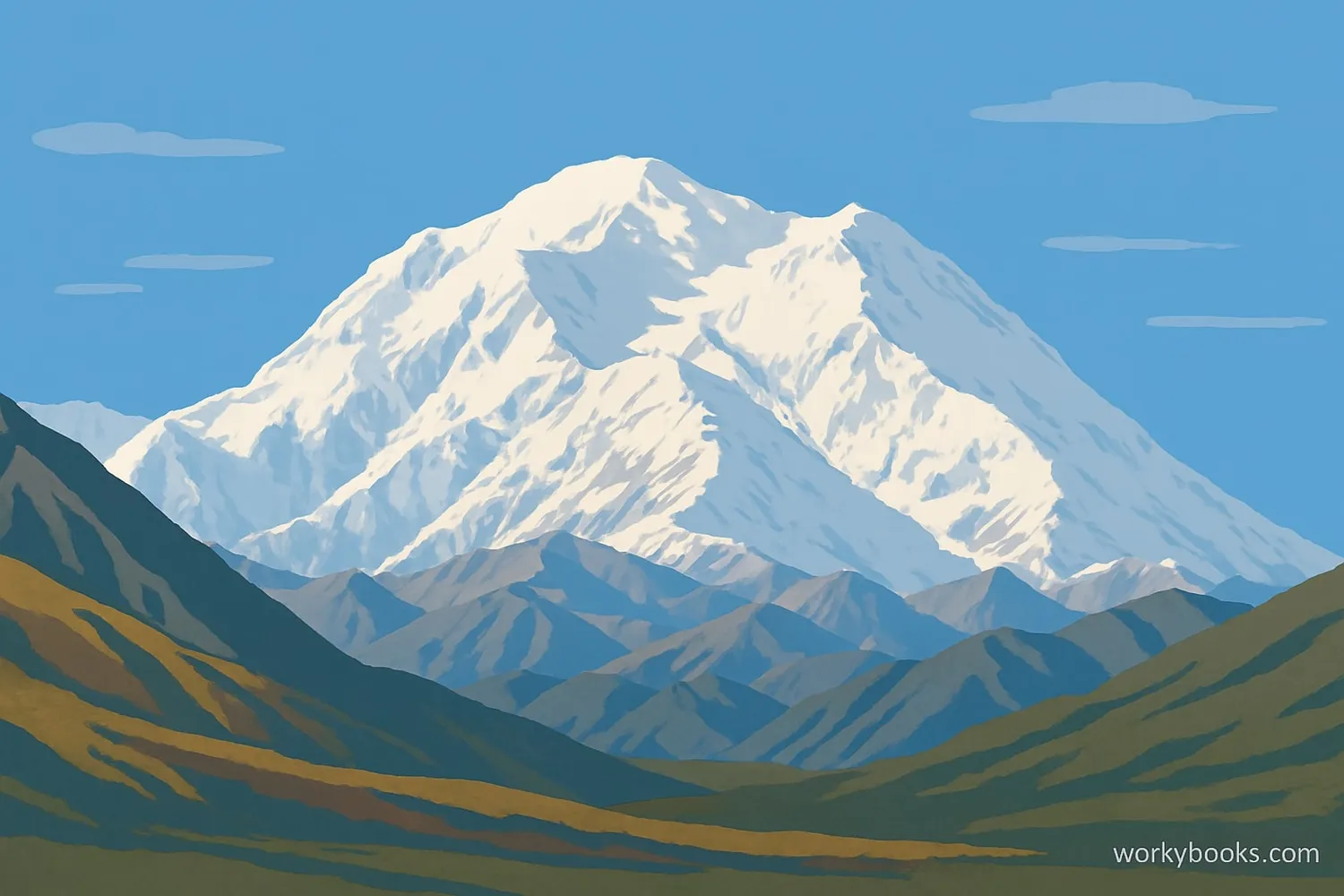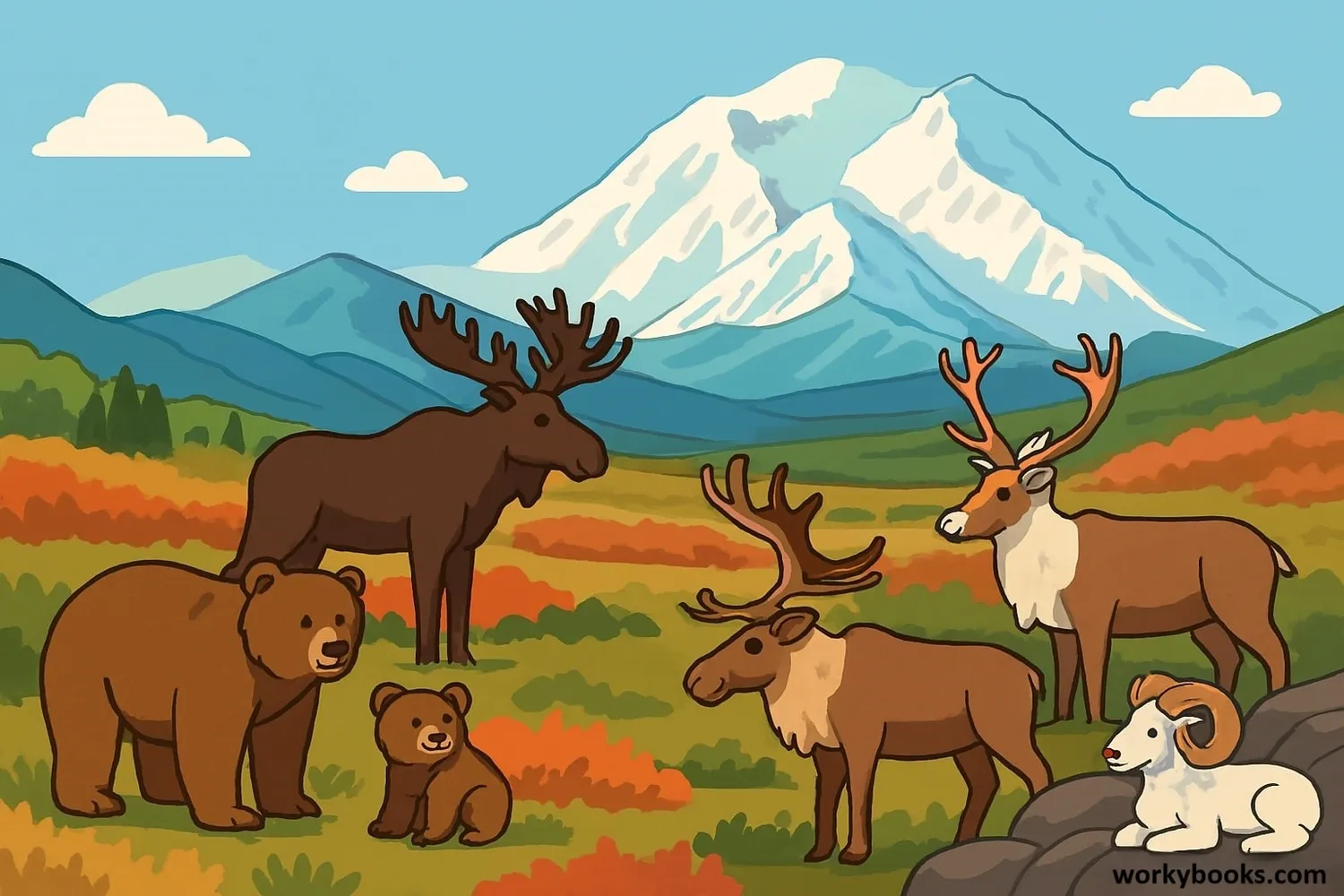Mount McKinley (Denali) - Definition, Examples, Quiz, FAQ, Trivia
Discover North America's tallest mountain peak in the Alaska Range
What is Denali?

Mount McKinley, also known as Denali, is the highest mountain peak in North America. Located in Alaska, its summit reaches 20,310 feet (6,190 meters) above sea level. The name "Denali" comes from the Koyukon Athabaskan word meaning "The Great One" or "The High One."
Denali is more than just a mountain - it's the centerpiece of Denali National Park and Preserve, a vast wilderness area that protects incredible wildlife and ecosystems. The mountain is famous for its massive vertical rise - it towers over the surrounding landscape more than any other mountain on Earth.
Height Fact!
Denali's vertical rise of about 18,000 feet from base to summit is greater than Mount Everest's rise from its base!
Geography & Features
Denali is part of the Alaska Range in south-central Alaska. Here are some key geographical facts:
Elevation
20,310 feet (6,190 meters) - highest in North America
Location
Alaska Range, 130 miles northwest of Anchorage
National Park
Centerpiece of Denali National Park (6 million acres)
Vertical Rise
18,000 feet from base to summit - world's largest
Glaciers
Over 40 named glaciers cover its slopes
Denali's massive size creates its own weather patterns. The mountain is often shrouded in clouds, and temperatures at the summit can drop to -75°F (-60°C) with wind chills reaching -118°F (-83°C). The extreme cold and high winds make it one of the most challenging mountains for climbers.
Tectonic Fact!
Denali is still growing! Tectonic forces push the mountain upward about 1 millimeter per year.
Climbing Challenges

Climbing Denali is one of the most challenging mountaineering experiences in the world. Here's what makes it so difficult:
Extreme Cold
Temperatures can drop below -40°F (-40°C)
High Winds
Hurricane-force winds are common at high elevations
Altitude
Thin air makes breathing difficult at high elevations
Glacier Travel
Hidden crevasses make travel dangerous
A typical Denali expedition takes 2-4 weeks. Climbers must carry all their supplies and be prepared for extreme conditions. The most popular route is the West Buttress, which requires crossing glaciers, climbing steep snow and ice slopes, and dealing with high-altitude challenges.
Only about 50% of climbers who attempt Denali reach the summit. Preparation requires months of training, specialized equipment, and mountaineering experience.
Wildlife & Wilderness

Denali National Park protects an incredible wilderness area larger than the state of Massachusetts. The park's ecosystems range from forested lowlands to alpine tundra and glaciers. This diverse habitat supports many species of wildlife:
Grizzly Bears
Approximately 300-350 grizzlies roam the park
Moose & Caribou
Large herds of caribou and moose inhabit the park
Dall Sheep
White sheep that live on steep mountain slopes
Wolves
Approximately 70 wolves in 7 packs within the park
The park follows strict wilderness management principles with just one road running through it. This limited access helps protect wildlife habitats and allows visitors to experience true wilderness. The park is also home to over 750 species of flowering plants that bloom during the short Arctic summer.
Mountain Quiz
Test your knowledge about Mount McKinley (Denali) with this quiz! Answer all 5 questions to see how much you've learned.
Frequently Asked Questions
Here are answers to common questions about Mount McKinley (Denali):
Mountain Trivia
Discover amazing facts about Mount McKinley (Denali):
First Ascent
The first successful summit of Denali was on June 7, 1913, by Hudson Stuck, Harry Karstens, Walter Harper, and Robert Tatum.
Thin Air
The air pressure at Denali's summit is less than half that at sea level. Climbers need supplemental oxygen above 18,000 feet.
Base to Summit
Denali rises about 18,000 feet from its base - more than Mount Everest's 12,000-foot rise from its base on the Tibetan Plateau.
Growing Mountain
Tectonic forces are pushing Denali upward at about 1 millimeter per year. It's also moving northward at approximately 3 millimeters annually.


